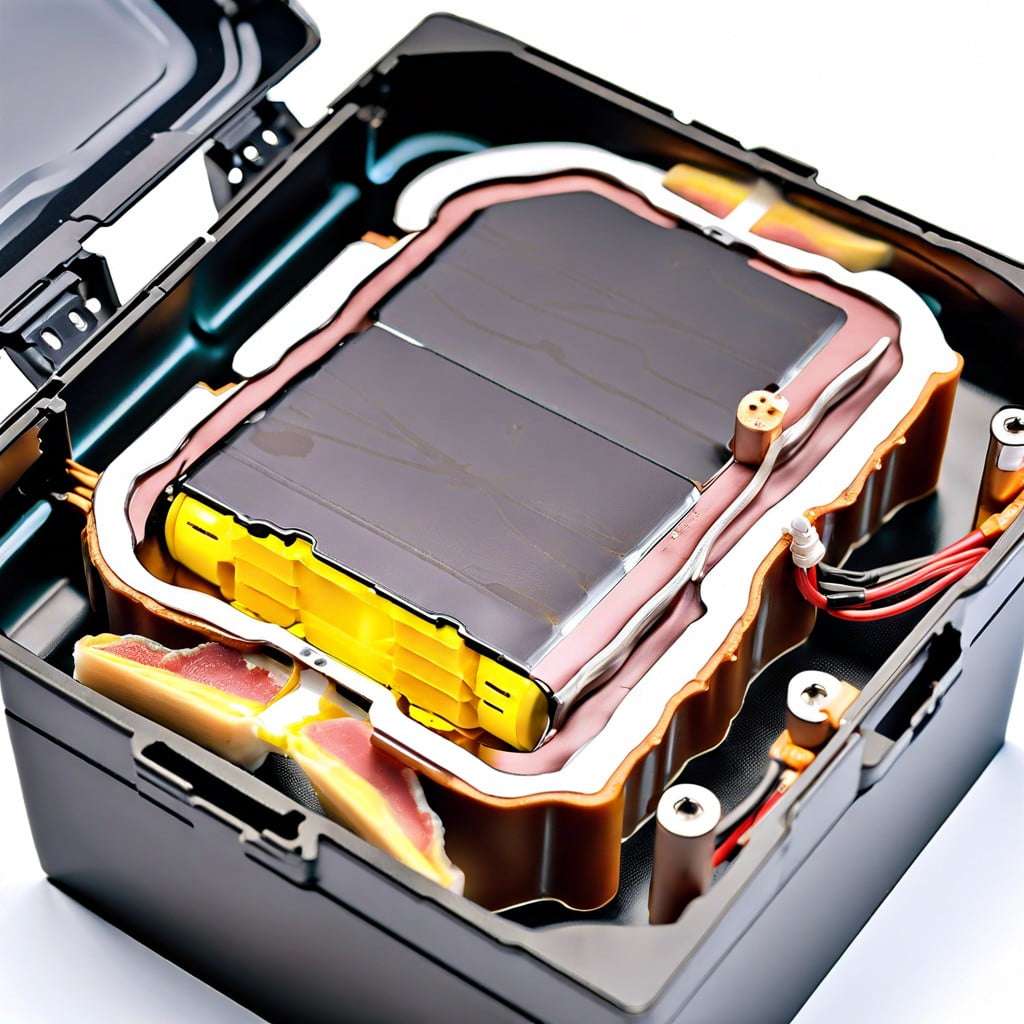Discover the innovative world of polymer batteries and their potential to revolutionize power storage in portable electronics.
Key takeaways:
- Lithium-polymer batteries generate power through the movement of lithium ions.
- They are safer than lithium-ion batteries but still require attention to hazards.
- Versatile applications include consumer electronics, electric vehicles, and aerospace.
- Lithium-polymer batteries offer flexibility and lightweight design compared to lithium-ion.
- Proper care and maintenance can extend the life of these batteries.
Working Principle

Lithium-polymer batteries generate power through the movement of lithium ions. These ions move from the negative electrode, or anode, usually made of carbon, to the positive electrode, or cathode, typically composed of a lithium metal oxide.
During discharge, electrons flow through the external circuit from anode to cathode, which powers the connected device. When charging, an external electrical power source forces the ions and electrons to revert back to the anode, storing energy for later use.
The distinctive feature of these batteries is the use of a polymer electrolyte instead of a liquid one, which can come in the form of a gel that allows for thinner cell construction and flexible battery shapes.
Safety
Lithium polymer batteries are considered safer than their lithium-ion counterparts due to their solid polymer electrolyte. This design minimizes the risk of leakage and is more resistant to overcharge; however, certain hazards still need attention:
- Thermal runaway is a potential risk if the battery is exposed to high temperatures or if it’s punctured, leading to overheating and possibly fire.
- Short circuits can occur if metal objects come into contact with the battery terminals, causing overheating and potential combustion.
- Overcharging or using an incompatible charger may damage the battery, increasing the likelihood of a fire hazard.
To mitigate these risks, manufacturers incorporate safety features like built-in circuitry to prevent overcharging and overheating. It is essential to follow the recommended usage guidelines, such as using the correct charger and avoiding exposure to high temperatures or puncturing the battery. Regular inspections can help identify any potential safety issues before they become serious problems.
Applications
Lithium polymer batteries are renowned for their versatility and efficiency, making them indispensable in various sectors:
- Consumer Electronics: These batteries power a myriad of portable devices, including smartphones, tablets, and laptops, thanks to their lightweight and slim profiles which cater to the demand for sleeker product designs.
- Electric Vehicles (EVs): Their ability to hold more charge and deliver higher currents suits electric cars, scooters, and bicycles that require sustained energy output and longevity on the road.
- Aerospace: The high energy-to-weight ratio of polymer batteries is ideal for drones and other aerospace applications, where every gram of weight impacts performance and endurance.
- Wearable Technology: Their flexible, moldable nature allows for integration into smartwatches, fitness bands, and other wearable gadgets, often necessitating custom battery shapes and sizes.
- Medical Devices: As they can be produced in various shapes and sizes, these batteries provide reliable power for a range of medical devices, including portable monitors and implantable units.
By enabling design freedom and offering high energy density, lithium polymer batteries have become essential components wherever portability and performance are required.
Comparison Between Lithium-Ion and Lithium-Polymer Batteries
Lithium-ion batteries are known for their high energy density, which allows them to store a significant amount of energy in a relatively small space. They have a rigid metal casing, which contributes to their overall weight. On the downside, they can pose a safety risk if damaged or improperly handled, as they are prone to swelling and, in extreme cases, combustion.
In contrast, lithium-polymer batteries offer versatility with a flexible, lightweight design. Their soft, pouch-like structure makes them less susceptible to leakage, even if the outer casing is damaged. They typically have a lower energy density compared to lithium-ion batteries, meaning they don’t hold as much charge for their size. However, their slim profile and adaptability to different shapes make them particularly well-suited for modern electronics such as smartphones, wearables, and drones.
When it comes to charging, both types have similar charge times and lifespan, with cycle life depending on usage and care. The cost is a factor where lithium-polymer batteries tend to be more expensive due to their manufacturing process.
Choosing between the two often depends on the application’s specific needs, prioritizing between energy capacity, shape flexibility, weight considerations, and budget.
Care and Maintenance of Lithium Polymer Batteries
Proper care and maintenance can significantly extend the life of lithium-polymer batteries. Here are some tips to help you keep your batteries in top condition:
- Charge correctly: Use a charger specifically designed for lithium-polymer batteries to avoid overcharging or imbalanced cells. Charging within the recommended voltage range (usually 4.2 volts per cell) is vital.
- Avoid deep discharging: Try not to let your battery’s charge drop below 3 volts per cell to prevent irreversible capacity loss.
- Store safely: When not in use, store your batteries in a cool, dry place at a partial charge – around 3.7 volts per cell is ideal.
- Monitor temperature: Never charge or discharge batteries outside the temperature range recommended by the manufacturer (often 0°C to 45°C for charging and -20°C to 60°C for discharging).
- Inspect regularly: Before use, look for any signs of damage, such as puffing, cracks or leaks. Damaged batteries should be recycled or disposed of properly.
- Balance charge: Regularly perform a balance charge to ensure all cells reach equal voltage, which maximizes capacity and prolongs battery life.
- Avoid physical stress: Do not drop, puncture or bend the batteries, as physical stress can lead to internal damage and unsafe operating conditions.
By following these guidelines, you can help ensure your lithium-polymer battery operates safely and efficiently for as long as possible.
Recap




